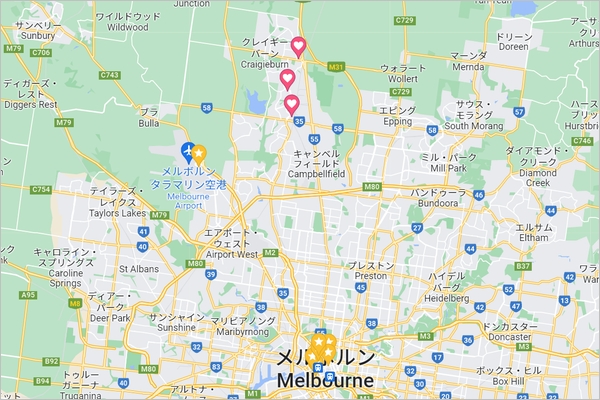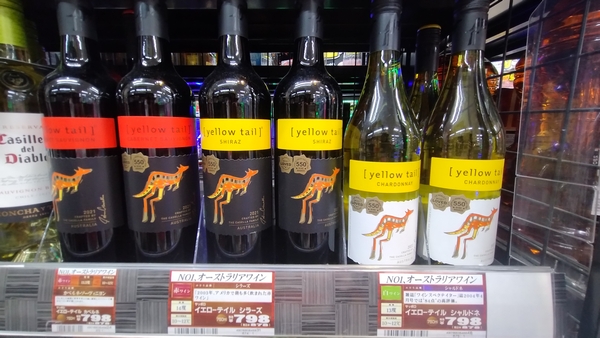オーストラリアでは何かとカレー粉が好まれる気がする。
「今日はシェパーズパイを作るわ」

オーストラリアでホームステイをしていたとき、その家のカレン姉さんは、夕食にシェパーズパイを作ってくれた。
そのときは、ひき肉をカレー粉で炒めて、それからじゃがいもやさつまいものマッシュを上に乗せました。

シェパーズパイは、お肉とおいもマッシュの2層のグラタンです。
美味しかったなー♡

* * *
「オーストラリアのカレー」というのにせっかく関わったので、「オーストラリアのカレー事情」について、自分も知識を持ちたいなと思いました。
良い論文がありました!

◆「Ordinary and Exotic: A Cultural History of Curry in Australia」(≫こちら)
(タイトル訳:普通でエキゾチック:オーストラリアのカレーの文化史)
面白そう~。読んでみました。
- 1969年、「オーストラリアで最も人気のあるカレー」であるKeen’sは、「Kare Daging」のレシピとともに、「本物のインド風味のカレー」を消費者に提供しました(In 1969, “Australia’s most popular curry”, Keen’s, offered consumers an “Authentic Indian-flavour curry”, with a recipe for “Kare Daging”)
- この広告は、オーストラリアでの2世紀にわたるカレーの歴史におけるカレーの捉えられ方を表しています。(This advertisement epitomises how curry was thought about over the two centuries of curry’s history in Australia.)
- キーンのカレー粉は1860年代に設立されたタスマニアブランド(Keen’s Curry Powder. As a Tasmanianbrand established in the 1860s, )
- 「多くの人がカレーが好き」:19世紀のオーストラリアの重要な瞬間(“Many People are Fond of Curry”: Key Moments in 19th Century Australia)
- 19世紀初頭、カレーはオーストラリアの植民地に到着し、新しい料理文化の中で急速にその地位を確立しました。(Early in 19th century, curry arrived in the Australian colonies, rapidly establishing itsplace in an emerging culinary culture.)
- カレー粉は、19世紀と20世紀の両方でオーストラリア人がカレーを準備するための主要な手段でした。(Curry powder was the dominant means by which Australians, in both the 19th and 20th centuries, prepared curry.)
- お茶は中国から、砂糖はベンガルまたはカリブ海から、コーヒー、ココアは熱帯アメリカから、ハム、チーズ、グーズベリーは英国自体から、ケーパー、オリーブ、レーズンはジブラルタルまたはイオニア諸島から、カレー粉とスパイスはインドから、おそらくイギリスの商人によって混ざり合った。(Tea came from China, sugar from Bengal or the Caribbean, coffee,cocoa from the tropical Americas, ham, cheese, and gooseberries from Britain itself, capers, olives, and raisins from Gibraltar or the Ionian Islands, curry powder and spices from India, perhaps blended by merchants in England.)
- 多くのアングロインディアンはとインド人の使用人は、英国に戻るのではなくオーストラリアに移住することを選択した。(Many Anglo-Indians, with Indian servants, chose to migrate to Australia rather than return to Britain)
- インドからはまずホバートに、次にシドニーにカレーペーストが到着したことは、タスマニアが重要な貿易の「結び目」であったことを示唆しています(The arrival of curry paste from India, first to Hobart then Sydney, suggests Tasmania was an important trading “node”)
- 「肉と魚のカレーペースト」は、1831年5月にホバートタウンクーリエで宣伝されました。ペーストがシドニーの新聞に掲載される1年以上前です。(“Meat and Fish curry paste” was advertised in the Hobart Town Courier in May 1831, over a year before paste appeared in the Sydney press.)
- カレー粉は、早くも1866年にオーストラリア(植民地)で開催された国際展示会で展示されました。(Curry powders were displayed at international exhibitions in the Australian colonies as early as 1866.)
- カレーは、1864年に発行された最初のオーストラリア料理マニュアルに掲載され、オーストラリアの包括的な料理本に引き続き掲載されています。(Curry appeared in the first Australian cookery manual, published in 1864, and has continued to feature in comprehensive Australian cookbooks)
- カレーが最初に登場した1813年(curry’s first appearance in1813)
- カレーは、20世紀の料理本や新聞のレシピで一般的でした。(Curry was common in cookery books and newspaper recipes in the 20th century.)
- 「ドライカレー」と「エッグアンドバナナカレー」は、オーストラリアの甘いカレーのトレンド。(The “Dry Curry” and the “Egg and Banana Curry” can be situated within a trend of sweeter Australian curries.)
- カレーは残りの肉を使い切る方法として提唱された。(Curry was offered as way of using up leftover meat)
- 大恐慌時代の料理本では、カレーと経済との関連がより顕著になり、「臓物カレー」のレシピが登場します。(In cookbooks from the Depression era,the association of curry with economy becomes more pronounced, with the appearance ofrecipes for curried offal.)
- 20世紀初頭のオーストラリアのカレーに関する一般的な批判は、その質の悪さ(A common criticism concerning the curries of early 20th century Australia was their poor quality, )
- 砂糖に対する食欲の高まりは、オーストラリアのカレーの甘い材料の増加に反映されていた。早くも1901年には、カレーの成分としてのバナナが注目された。(A heightened appetite for sugar was echoed by a rise insweet ingredients in Australian curries. As early as 1901, the rise of bananas as an ingredientin curries was noted. )
- 1950年代のレシピでは、果物に加えてかなりの量の砂糖が必要でした。(A recipe of the 1950s called for a substantial quantity of sugar in addition to fruit:)
- 甘いカレーの味は1980年代まで続いた(This taste for sweet curries continued into the 1980s)
- 白豪主義は1973年に正式に廃止された。アジアのさまざまな国からの移住者が増えた(The White Australia Policy was officially abolished in 1973, resulted in greater migration from various Asian countries.)
- 少なくとも1840年代以降、カレーは公共の飲食店のメニューに登場した(While curry appeared on the menus of public eateries at least since the 1840s)
- ジョセフキーンは1843年に金を稼ぎにタスマニアに到着した。(Joseph Keen arrived in Tasmania in 1843 as a bounty immigrant)
- キーンと妻はカレー粉を含むさまざまなソースと調味料を製造した。キーンの独特のスパイスの組み合わせは、1866年の展示会で金メダルを獲得した。(Keen and his wife Annie produced a range of sauces and condiments, including curry powder. Keen’s distinctive combination of spices won a gold medal at the 1866 exhibition,)
- キーンが国際的な広告で位置づけられたもう1つの方法は、「純粋さ」の言説によるものでした。 この製品は、信頼性が高くタスマニア産として販売されました。(Another way Keen’s was positioned in advertising with regard to the international wasthrough a discourse of “purity”. The product was marketed as reliable and Tasmanian. )
- 自主的な清算と1954年のキーンズの買収後、同社は生産をメルボルンに移し、流通を拡大しました。(After a voluntary liquidation and the takeover of Keen’s in 1954, the firm shifted production to Melbourne, and expanded distribution)
- 20世紀の終わりまでに、キーンのカレー粉は全国のキッチンの定番に成長しました。(to the close of the 20th century, Keen’s Curry Powder grew from a locally produced Tasmanian product inspired by empire, to a pantry staple across the nation.)
- 今日、タスマニアはホタテのカレーパイで有名です。(Today, Tasmania is renowned for curried scallop pies. )
- ホタテは、19世紀初頭以来タスマニアで(最初はダーウェントで)漁獲されてきました。1927年、キーンのカレー粉は軟体動物で調理することを提案しました。「笑顔のランチ:ホタテをキーンのカレー粉でカレーにしました」そ(Scallops have been fished in Tasmania, initially in the Derwent, since the early 19th century. In 1927, Keen’s Curry Powder suggested their product be cooked with the mollusc, “A lunch of smiles: Scallops curried with Keen’s Curry”, )
* * *
ちょっとざっとメモのような記載になりましたが、オーストラリアのカレーの歴史は、19世紀はじめにカレーが到着して以来、ただの英国の単純なコピーではなく、独自に発展したことが分かりました。
しかし早いですよね。
もう200年前にはカレーがあったということは。
日本でインスタントカレールウが販売されたのが1926年(大正15年)、それ以前にもあったはあったんだけど、カレーがメジャーになってまだ100年ということを考慮すると、やはり200年前にカレーがあったのなら、カレーはオーストラリアの伝統食文化と言っていい。
上の論文ではまた、特にタスマニアで商業的に成功するキーンズのカレー粉が作られ、それが買収されてオーストラリア本土から販売網を拡大していったことや、そもそもオーストラリアではバナナや砂糖が入る甘いカレーが伝統的だったことなどもわかりました。本文にはホタテカレーパイ(Curried scallop pies)について言及していますが、さて、私もレシピを探して作ってみようと思います。
もうひとつ、私と家族の「旅したい場所」のリストにタスマニアが含まれているので、現地でホタテカレーパイを食べるのを必須事項にして、旅準備や旅計画も頑張ろうと思います。



